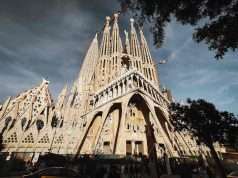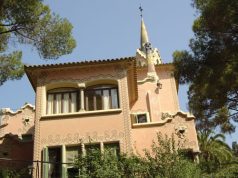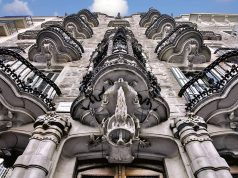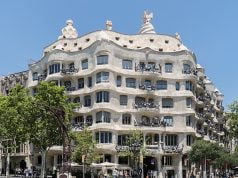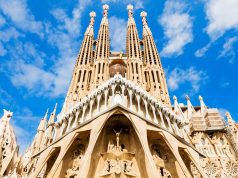Designed for Eusebi Güell by Gaudí and situated in rhe Pedralbes district of Barcelona this is one of Guadí’s creations that many tourists miss out on.
The Güell Pavilions Barcelona designed by Antoni Gaudí for Count Eussebi Güell, an industrialist and close friend of Gaudí. The two pavilions, a stable and a small lodge were built between 1884 and 1887 and feature the less known feature of Gaudí’s iron work talents The Dragon’s Gate. The Güell Pavilions are in Sarrià, Les Corts district, which now form part of the city of Barcelona. Gaudí also played a part in the design of the Incas Gardens, where he designed two fountains. In this post we will take a quick look at its history and unique features of this unique Gaudí complex.
Güell Pavilions started life when Gaudí was approached by his good friend Eusebi Güell to re-model the original Torre Satalia, and add a wall with gates. The idea of Gaudí was to create a house in his Orientalist style, similar to Mudéjar. Originally, there were three entrances to the complex, but further development in the area has left the site with one main entrance.
What is interesting about the Güell Pavilions is that it highlights Gaudí’s early work and influences. It was around this time that Gaudí was in an Orientalist stage of his designs. The buildings contain such captivating elements as parabolic arches, Catalan vaulting and ceramic tiles. Many of these design features have been used consistently throughout much of Gaudí’s works.
The Dragon’s Gate, an iron gate depicting a mystical angry dragon. This is probably one of the most amazing gates i personally ever seen, and is a highlight of the visit. The Dragon’s Gate was designed by Antoni Gaudí and built by Juan Oños in 1885, and is truly a memorizing sight. The myth of the dragon comes from the poem L’ Atlantida by Jacinto Verdaguer.

Gaudí took particular interest in the design of the Güell Pavilions gardens. Several trees and plants, typical of the Mediterranean region, were planted on the grounds. These include pine, palm trees, Cypresses and Magnolia Two fountain features were also designed by gaudi and featured within the gardens of the estate. Overall, Güell Pavilions has become an important reference to Gaudí’s early work and is well worth a visit.
A unique feature of the Güell Pavilions is the Dragon’s Gate. Based on The myth of the garden of the hesperides.
Güell Pavilions Barcelona Recent History
Eusebi Güell left Güell Pavilions in his will to the Royal Family of Spain. It was acquired after the use of the Spanish Royal Family by Barcelona University. In 2015 the site was opened to tourists with visits to the gardens and stables. Today it forms part of the Avda Diagonal section of the university, and is in current use.The Güell Pavillions in 1969 were declared a Monumento of National Historic and Artistic Interested. The Güell Pavilions are currently used as the headquarters of the Royal Gaudí Chair. Fortunatley for Guadí fans the Güell Pavillions can be visited at the weekends.
How To Get To The Güell Pavilions
The Güell Pavilions Barcelona are on the Avenida de Pedralbes 7. The nearest metro station, Palau Reial or Maria Cristina, line 3, which is a short walk away from the pavilions. You can travel by bus to the Güell Pavilions with the numbers 7, 33, 63, 67, 75, 78, 113, H6 and V5. A taxi ride would take around 15 minutes to cover the 5 km distance from the center of Barcelona. The opening times are 10:00 to 14:00h weekends. The times may be subject to changes, please contact Güell Pavilions before attending.


